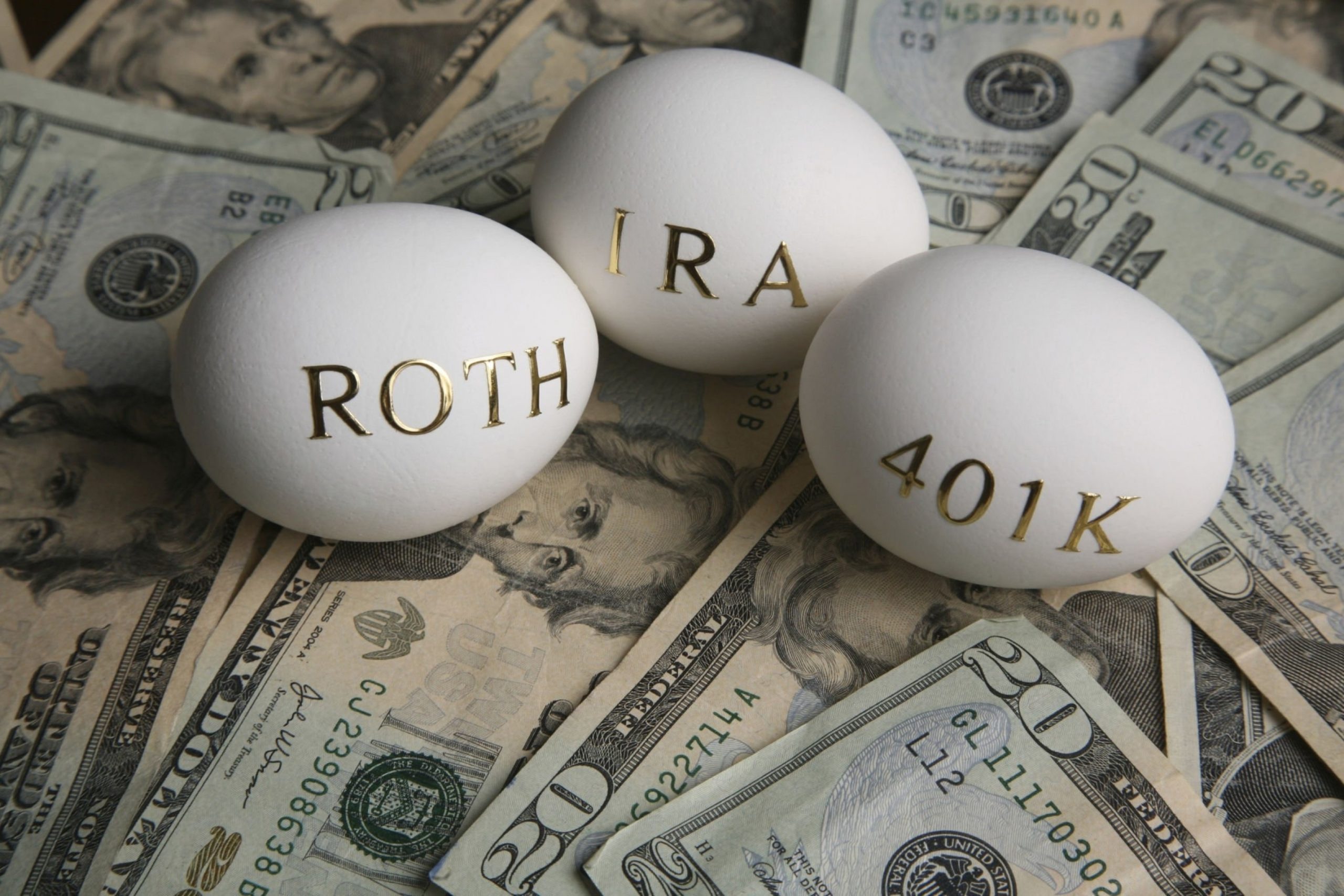In this article, we’ll take a closer look at what is Roth IRA, explaining what they are, how they work, and why they can be a smart choice for your retirement savings.
Understanding Roth IRA for Your Retirement Savings

When you’re planning for your future, it’s essential to know about different ways to save for retirement. One such option is called a Roth IRA.
What is Roth IRA?
A Roth IRA is short for “Roth Individual Retirement Account.” It’s a special type of savings account designed to help you save for your retirement. What makes it special is how it handles taxes.
With a Roth IRA, you put money into the account after you’ve paid taxes on it. In other words, you don’t get a tax break when you put your money in, but the big advantage comes later when you take your money out.
Why Taxes Matter
Let’s talk a bit more about taxes because they play a crucial role in how Roth IRAs work. When you earn money from your job or other sources, you usually have to pay taxes on it.
That’s how the government gets money to pay for things like schools, roads, and hospitals. So, when you put your hard-earned money into a Roth IRA, you’ve already paid your share of taxes on it.
Tax-Free Growth

Now, here’s the exciting part. Once your money is inside a Roth IRA, it can grow over time. You might invest it in things like stocks, bonds, or mutual funds, and those investments can earn money too.
The best part is that when you take that money out in retirement, you generally don’t have to pay any more taxes on it. That’s right – your earnings can be completely tax-free.
Contributing and Limits
To put money into a Roth IRA, you need to have a job or some source of income. That’s because you can only contribute money you’ve earned. The government sets a limit on how much you can contribute to your Roth IRA each year.
This limit can change, so it’s a good idea to check the current rules. It’s important to remember that if you put in more money than the limit allows, you could face penalties.
Tax Advantages
The big advantage of a Roth IRA is that you get to enjoy your money tax-free in retirement. Imagine having a pot of money you can use for your living expenses, travel, or anything else you want, and you don’t have to give a chunk of it back to the government in taxes. That’s the magic of a Roth IRA.
Flexibility in Withdrawals
Roth IRAs also offer flexibility when it comes to taking your money out. Since you’ve already paid taxes on the money you put in, you can generally take out your contributions at any time without worrying about extra taxes or penalties. This flexibility can be handy in case you need to access your savings for emergencies or important expenses.
Who Can Contribute?
While Roth IRAs offer fantastic tax advantages, not everyone can contribute to one. There are income limits set by the government, and if you earn above a certain amount, you might not be eligible to make direct contributions to a Roth IRA.
However, there’s a strategy called the “backdoor Roth IRA” that some high earners use to still enjoy Roth benefits. It’s a bit more complicated, so it’s a good idea to speak with a financial advisor if you’re in this situation.
No Age Restrictions
Here’s another cool thing about Roth IRAs – there are no age restrictions. You can keep contributing to your Roth IRA even after you turn 70½, which is when traditional IRAs typically require you to start taking out a certain amount each year. This means you have more flexibility and control over your retirement savings.
Roth IRA vs. Traditional IRA
Roth IRAs are fantastic, but they’re not the only game in town. There’s another type of retirement account called a traditional IRA. The big difference between them is how taxes work. With a Roth IRA, you pay taxes upfront when you put money in, and then your withdrawals in retirement are tax-free.
In a traditional IRA, you get a tax break when you put money in, but you pay taxes on your withdrawals in retirement. Which one is right for you depends on your unique financial situation and your future tax expectations.
So, in simple terms, a Roth IRA is like a special savings account for your retirement. You put in money you’ve already paid taxes on, and then it can grow over time without you having to pay more taxes on the earnings.
When you’re retired and ready to use the money, you usually don’t have to pay any taxes on it. It’s a great way to secure your future and enjoy your retirement without worrying too much about taxes.
In the end, whether a Roth IRA is right for you depends on your financial situation and what you want for your retirement. It’s always a good idea to talk to a financial expert who can help you make the best choices for your future. So, when someone asks, “What is Roth IRA?” you can tell them it’s a smart way to save for retirement while keeping your taxes under control.
What Is Roth IRA: Features and Who Can Use It

When you’re thinking about saving money for when you stop working, there are many ways to go about it. One option that might be good for you is called a Roth Individual Retirement Account, or Roth IRA for short.
This special savings account has some interesting things about it that can help you, and it’s important to know the rules about who can use it.
Tax Perks of a Roth IRA
One of the cool things about a Roth IRA is how it deals with taxes. Let’s break down the tax stuff in simple terms. When you earn money from your job or other sources, the government often takes a portion of it as taxes.
This is how the government gets money to pay for things like schools, roads, and hospitals. Now, with a Roth IRA, you put money into it after you’ve already paid your taxes. This means you don’t get a tax break right away like some other savings accounts offer.
But here’s where it gets interesting. When you’re older and want to use the money you saved in your Roth IRA, you usually don’t have to pay more taxes on it. Yep, you heard that right – it’s like a tax-free bonus for your future self.
This is different from other types of accounts that might make you pay taxes when you take your money out. So, if you expect to be in a higher tax bracket when you retire, a Roth IRA can be a smart choice.
Limits on Contributions and the Rules
Now, let’s talk about the rules for how much money you can put into your Roth IRA. The government sets a maximum amount you can contribute each year. This limit might change over time, so it’s a good idea to keep an eye on the current rules. If you put in more money than the limit allows, you might have to pay extra fees.
The maximum amount you can put in depends on your age and how you file your taxes. Generally, if you’re under 50, you can put in more money each year compared to folks who are 50 or older. The idea is to encourage older folks to save more as they get closer to retirement.
Remember, the money you put in should come from income you earned, like your salary or wages. You can’t just put in money you received from investments or other sources that didn’t involve your hard work.
Who Can Use a Roth IRA?

Now, let’s get into the rules about who can use a Roth IRA. These rules are essential to understand because not everyone can have one.
1. Income Limits:
Your income plays a big role in whether you can open and contribute to a Roth IRA. The government sets specific income limits, and they can be different depending on your tax-filing status.
For example, if you’re single and your income is higher than a certain amount set by the government, you might not be allowed to put money into a Roth IRA. The same goes for married couples who file their taxes together. These income limits can change, so it’s a good idea to check what they are for the year you’re thinking about opening a Roth IRA.
2. Age Doesn’t Matter:
Unlike some retirement accounts, there’s no age limit for opening and contributing to a Roth IRA. This means you can start one even if you’re older, and you can keep adding money to it after you turn 70½.
This is different from other accounts that might make you start taking out a certain amount each year once you hit that age. Having no age restrictions gives you more control over your retirement savings.
3. Earning an Income:
To put money into a Roth IRA, you need to have earned income. This income usually comes from having a job, working for yourself, getting alimony, or similar sources where you had to put in some effort to earn it. Passive income, like rent from property or money you made from investments, typically doesn’t count for Roth IRA contributions.
Roth IRA vs. Traditional IRA
Now, let’s talk about how Roth IRAs are different from traditional IRAs. Both of these accounts are ways to save for retirement, but they handle taxes in a unique way.
In a traditional IRA, you often get a tax break when you put money in. It’s like a little gift from the government – you get to pay less in taxes that year. However, when you’re ready to use the money in retirement, you’ll usually have to pay taxes on it.
With a Roth IRA, it’s the opposite. You don’t get a tax break when you put money in because you already paid taxes on that money. But when you’re older and want to use the money, it’s usually tax-free. This can be especially helpful if you think your taxes might be higher when you retire.
In simple terms, a Roth IRA is like a special savings account for when you’re done working. You put money in after you’ve already paid taxes on it, and when you’re ready to enjoy your retirement, you usually don’t have to pay more taxes on the money you take out. It’s a smart way to save money and keep more of it for yourself in the long run.
So, when someone asks, “What is Roth IRA?” you can explain that it’s a way to save for your future, and if you follow the rules, you might not have to pay taxes on the money you save. Just remember that not everyone can use a Roth IRA because there are income limits. It’s always a good idea to talk to a financial expert to see if it’s the right choice for you based on your income, age, and future plans.
Choosing Between Roth IRA and Traditional IRA for Retirement Savings

When you’re thinking about saving money for when you stop working, there are two options that might be on your radar: Roth Individual Retirement Accounts (Roth IRAs) and Traditional Individual Retirement Accounts (Traditional IRAs).
They’re both ways to save for retirement, but they work differently. Let’s break down these two options in straightforward terms to help you figure out which one might be right for you.
What Is Roth IRA and Traditional IRA?
Before we dive into the details, let’s explain what these two accounts are all about:
- 1. Roth IRA: A Roth IRA is a savings account where you put in money after you’ve already paid taxes on it. The big benefit is that when you retire and want to use that money, you usually don’t have to pay any more taxes on it. In simple words, it’s like a tax-free retirement bonus
- Traditional IRA: A Traditional IRA is a different type of savings account. When you put money into it, you often get a tax break right away. This means you pay less in taxes for that year. But here’s the catch: when you take the money out in retirement, you’ll owe taxes on it. The idea here is that you might be in a lower tax bracket when you retire, so you’d pay fewer taxes on the money then.
Now, let’s see how these two options compare.
Tax Treatment: Roth IRA vs. Traditional IRA
The big difference between Roth IRAs and Traditional IRAs is how they handle taxes:
- Roth IRA: With a Roth IRA, you use money that’s already had taxes taken out. This means you don’t get a tax break right away. But here’s the exciting part: when you’re older and ready to use the money, you usually don’t have to pay any more taxes on it. It’s like getting your money tax-free.
- Traditional IRA: With a Traditional IRA, you often get a tax break when you put money in. It’s like the government giving you a small gift – you pay less in taxes that year. However, when you retire and start taking money out, you’ll owe taxes on those withdrawals. The idea here is that you might be in a lower tax bracket when you retire, so you’d pay less in taxes on the money later.
Age Rules: Roth IRA vs. Traditional IRA
- Roth IRA: Roth IRAs don’t have age limits for contributing money. You can keep putting money into a Roth IRA as long as you have some earned income, no matter how old you are. This gives you more control over your retirement savings.
- Traditional IRA: Traditional IRAs have age restrictions. Once you hit 70½ years old, you usually have to start taking out a specific amount of money each year, known as Required Minimum Distributions (RMDs). This is a rule set by the government. If you don’t follow it, you can face hefty penalties.
Required Minimum Distributions (RMDs): Roth IRA vs. Traditional IRA
- Roth IRA: Roth IRAs don’t have RMDs during your lifetime. This means you’re not forced to take out a specific amount of money each year once you reach a certain age. You can leave your money in your Roth IRA to grow tax-free for as long as you like.
- Traditional IRA: Traditional IRAs, as we mentioned earlier, come with RMDs that start at age 70½. The amount you must withdraw is calculated based on your age and the balance in your account. The government wants to make sure they eventually collect taxes on the money you’ve saved.
Eligibility and Income Limits: Roth IRA vs. Traditional IRA
- Roth IRA: Roth IRAs have income limits that can affect your eligibility to contribute directly to the account. If your income goes beyond the limits set by the IRS, you might not be allowed to put money into a Roth IRA directly. But there’s a trick called the “backdoor Roth IRA” that some higher-income folks use to still enjoy Roth benefits.
- Traditional IRA: Traditional IRAs don’t have income limits that stop you from contributing directly. However, if you or your spouse have access to a workplace retirement plan, like a 401(k), and your income is high, your tax deduction for contributions might be limited.
Penalties for Early Withdrawals: Roth IRA vs. Traditional IRA
- Roth IRA: With a Roth IRA, you can take out your contributions at any time without penalties or taxes. It gives you some flexibility in case you need access to your savings before retirement. However, if you take out the earnings on your contributions before age 59½ and before the account has been open for five years, you might have to pay taxes and penalties.
- Traditional IRA: If you withdraw money from a Traditional IRA before age 59½, you typically face a 10% early withdrawal penalty, along with income taxes on the withdrawn amount. There are some exceptions, like using the funds for higher education expenses or a first-time home purchase.
Inheritance: Roth IRA vs. Traditional IRA

- Roth IRA: Roth IRAs can be a smart way to leave a tax-free inheritance to your loved ones. When you pass away and leave a Roth IRA to your heirs, they can inherit it and keep enjoying tax-free growth and tax-free withdrawals, as long as they follow the rules.
- Traditional IRA: People who inherit a Traditional IRA usually owe income taxes on the distributions they receive. This means that taxes on a Traditional IRA are deferred until the money is withdrawn, whether by the original account owner or their beneficiaries.
Which One to Choose?
Picking between a Roth IRA and a Traditional IRA depends on a few things, such as your current financial situation, your future tax outlook, and your retirement goals. Here are some things to consider:
Think About a Roth IRA If:
- You expect your income to be higher when you retire.
- You like the idea of not paying taxes on your savings in retirement.
- You want to be able to take out your contributions without penalties.
Consider a Traditional IRA If:
- You think your income will be lower when you retire.
- You want a tax break right away for your contributions.
- You’re okay with taking out a set amount each year in retirement (RMDs).
Conclusion

In a nutshell, both Roth IRAs and Traditional IRAs offer ways to save for retirement, each with its own tax rules and regulations. Your choice between the two should match your personal financial situation and long-term retirement goals. It’s always a good idea to consult with a financial advisor to help you make the right decision.
Understanding what is roth ira and the differences between Roth IRAs and Traditional IRAs is crucial for making an informed choice about your retirement savings. Consider your income, your age, your tax situation, and what you want in retirement as you weigh the pros and cons of each. Your decision will shape your financial future and how you enjoy your retirement years.
We Hope you’ve learned a lot from this article!! We’re glad you did. Join our telegram community to get up-to-date news, educational materials, free online classes, market analysis, and crypto futures trade signals that will help you grow and become profitable.


